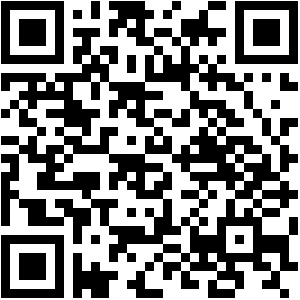Etnobotani Masyarakat Suku Lio: Studi Kasus di Desa Waturaka Kawasan Taman Nasional Kelimutu Kabupaten Ende Nusa Tenggara Timur
DOI:
https://doi.org/10.23969/biosfer.v7i1.5463Keywords:
Ethnobotany, Medicinal plants, Purposive sampling, Kelimutu National ParkAbstract
The purpose of this study was to determine the interaction of the surrounding community with the diversity of plants in the TNK area and to identify the use of plants by the community around TNK. This research was conducted in the Kelimutu National Park area, Ende Regency, East Nusa Tenggara Province and Waturaka Village in May 2021. The tools used in this study, namely: interview guide (questionnaire), stationery, camera, recorder, calculator, machete/machete, flower scissors, label paper, plastic rope, plastic, a list of respondents' questions, and a computer and its equipment. While the materials used in this study were 70% alcohol, plant samples, bamboo sacks and newsprint. The research subjects are the people of Waturaka Village, Kelimutu District, Ende Regency. The objects in this study are medicinal plants in the Kelimutu National Park area and are cultivated by the community in Waturaka Village. The study used a survey method through observation and identification of plants and the determination of respondents by purposive sampling method totaling 250 people, consisting of 65 men and 185 women. The data obtained were analyzed using qualitative descriptive. The results showed that there were 49 species of medicinal plants from 29 families. Leaves are the most widely used plant parts as medicines. Zingiberaceae family has the highest usage percentage of 85%.
Downloads
References
Aminah, S., Wardenaar, E., & Muflihati. (2016). Tumbuhan obat yang dimanfaatkan oleh battra di desa sejahtera kecamatan sukadana kabupaten kayong utara. Tumbuhan Obat Yang Dimanfaatkan Oleh Battra Di Desa Sejahtera Kecamatan Sukadana Kabupaten Kayong Utara, 4, 299–305.
As Syaffa Al Liina, Husna Ainun Fauziah, dan N. (2017). document(50). BIOSFER : Jurnal Biologi Dan Pendidikan Biologi, 2(2).
Destryana, R. A., & Ismawati, I. (2019). Etnobotani dan penggunaan tumbuhan liar sebagai obat tradisional oleh masyarakat Suku Madura (studi di Kecamatan Lenteng, Guluk - Guluk, dan Bluto). Journal of Food Technology and Agroindustry, 1(2), 1–8.
Elfrida, Tarigan, N. S., & Suwardi, A. B. (2021). Ethnobotanical study of medicinal plants used by community in jambur labu village, East Aceh, Indonesia. Biodiversitas, 22(7), 2893–2900. https://doi.org/10.13057/biodiv/d220741
Hermawan, R., Chandra, A., & Sitepu, P. A. (2019). Strategi Pengembangan Ekowisata Di Taman Nasional Kelimutu. Jurnal Belantara, 2(1), 24–33. https://doi.org/10.29303/jbl.v2i1.128
HZ, R., Miswan, & Pitopang, R. (2015). Mandar Di Desa Sarude Sarjo Kabupaten Mamuju Utara. Biocelebes, 9(1), 73–87.
Khotimah, K., Nurcahayati, N., & Ridho, R. (2018). Studi Etnobotani Tanaman Berkhasiat Obat Berbasis Pengetahuan Lokal Masyarakat Suku Osing di Kecamatan Licin Banyuwangi. Biosense, 1(1), 36–50.
Langkamau, G. B., Purnama, M. M. E., & Kaho, P. L. B. R. (2019). Studi Kekayaan Dan Keanekaragaman Jenis Burung Di Jalur Tracking Wologai Taman Nasional Kelimutu , Kabupaten Ende , Propinsi Nusa Tenggara Timur.
Liliyanti, M., Mariani, Y., & Yusro, F. (2021). Pemanfaatan tumbuhan obat untuk perawatan rambut oleh Suku Dayak Kantuk di Desa Seluan Kabupaten Kapuas Hulu Kalimantan Barat. Bioma : Jurnal Ilmiah Biologi, 10(2), 228–247. https://doi.org/10.26877/bioma.v10i2.9019
Navia, Z. I., Suwardi, A. B., & Baihaqi. (2021). Ethnobotanical study of medicinal plants used by local communities in sekerak subdistrict, aceh tamiang, indonesia. Biodiversitas, 22(10), 4273–4281. https://doi.org/10.13057/biodiv/d221019
Oktavaia, G. A. E., Darma, I. D. P., & Sujarwo, W. (2017). Studi Etnobotani Tumbuhan Obat di Kawasan Sekitar Danau Buyan-Tamblingan Bali. Jurnal.Krbogor.Lipi.Go.Id, 20(1), 1–16.
Riza Linda, F. D. W. R. (2018). Etnobotani Tumbuhan Obat Suku Melayu Desa Durian Sebatang Kecamatan Seponti Kabupaten Kayong Utara. Jurnal Protobiont, 7(3), 36–46. https://doi.org/10.26418/protobiont.v7i3.29077
Rizky, H., Primasari, R., Kurniasih, Y., & Vivanti, D. (2019). Keanekaragaman Jenis Tumbuhan Paku Terestrial Di Kawasan Hutan Dengan Tujuan Khusus (Khdtk) Banten. BIOSFER : Jurnal Biologi Dan Pendidikan Biologi, 3(1). https://doi.org/10.23969/biosfer.v4i1.1357
Selviyanti, E. (2021). Etnobotani Tanaman Obat Keluarga di Desa Ujong Gunong Rayeuk, Kota Bahagia, Aceh Selatan. Seminar Nasional Peningkatan Mutu Pendidikan, 2, 137–144.
Silalahi, M., & Nisyawati. (2018). The ethnobotanical study of edible and medicinal plants in the home garden of Batak Karo sub-ethnic in north Sumatra, Indonesia. Biodiversitas, 19(1), 229–238. https://doi.org/10.13057/biodiv/d190131
Susani, N., Ati, N. U., & Hayat. (2019). Pengembangan Objek Wisata Taman Nasional Kelimutu Dalam Meningkatkan Pendapatan Asli Daerah Kabupaten Ende. Jurnal Respon Publik, 13(3), 103–112.
Suwardi, A. B., Mardudi, Navia, Z. I., Baihaqi, & Muntaha. (2021). Documentation of medicinal plants used by aneuk jamee tribe in kota bahagia sub-district, south aceh, Indonesia. Biodiversitas, 22(1), 6–15. https://doi.org/10.13057/biodiv/d220102
Suwardi, A. B., Navia, Z. I., Harmawan, T., Syamsuardi, & Mukhtar, E. (2020). Ethnobotany and conservation of indigenous edible fruit plants in south Aceh, Indonesia. Biodiversitas, 21(5), 1850–1860. https://doi.org/10.13057/biodiv/d210511
Walujo, E. B. (2011). Sumbangan ilmu etnobotani dalam memfasilitasi hubungan manusia dengan tumbuhan dan lingkungannya. Jurnal Biologi Indonesia, 7(2), 375–391.
Yusro, F., Pranaka, R. N., Budiastik, I., & Mariani, Y. (2020). Pemanfaatan Tumbuhan Obat Oleh Masyarakat Sekitar Taman Wisata Alam (Twa) Bukit Kelam, Kabupaten Sintang, Kalimantan Barat (the Utilization of Medicinal Plants By Communities Around Bukit Kelam Nature Park, Sintang Regency, West Kalimantan). Jurnal Sylva Lestari, 8(2)(2), 255–272. http://jurnal.fp.unila.ac.id/index.php/JHT/article/view/3811

























